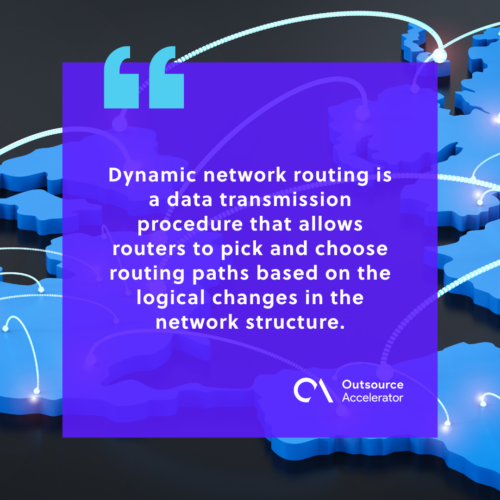Dynamic network routing
Definition
What is dynamic network routing?
Dynamic network routing is a data transmission procedure that allows routers to pick and choose routing paths based on the logical changes in the network structure. It is in contrast to conventional static network routing.
Dynamic network routing characterizes a network’s ability to route around damage. For example, the loss of a node or a connection between nodes if other paths are available. In reaction to the change, dynamic network routing allows many more routes as feasible to remain legitimate.

The benefit of dynamic network routing
The primary advantages of dynamic network routing are flexibility and adaptability. A dynamically directed network can grow and expand faster. Furthermore, it can adapt to changes in the network topology caused by this growth or by the failure of one or more network modules.
Contact centers use dynamic network routing to improve call agents’ efficiency and productivity. This adaptive method is known as omnichannel. It combines an integrated customer experience with better agent reactivity.
Other benefits of dynamic network routing:
- Allows for the sharing of routing information anytime the network’s topology changes.
- There is reduced administrative overhead because the manual configuration of routes is not needed.
- Static routing is less prone to error.
- Allows for scalability because there is less administrative cost.
The routing information does not need to be configured manually by the network administrator. Therefore, errors are less likely to happen.
When a change occurs, the network does not go down. Instead, it immediately finds the most efficient route.







 Independent
Independent




